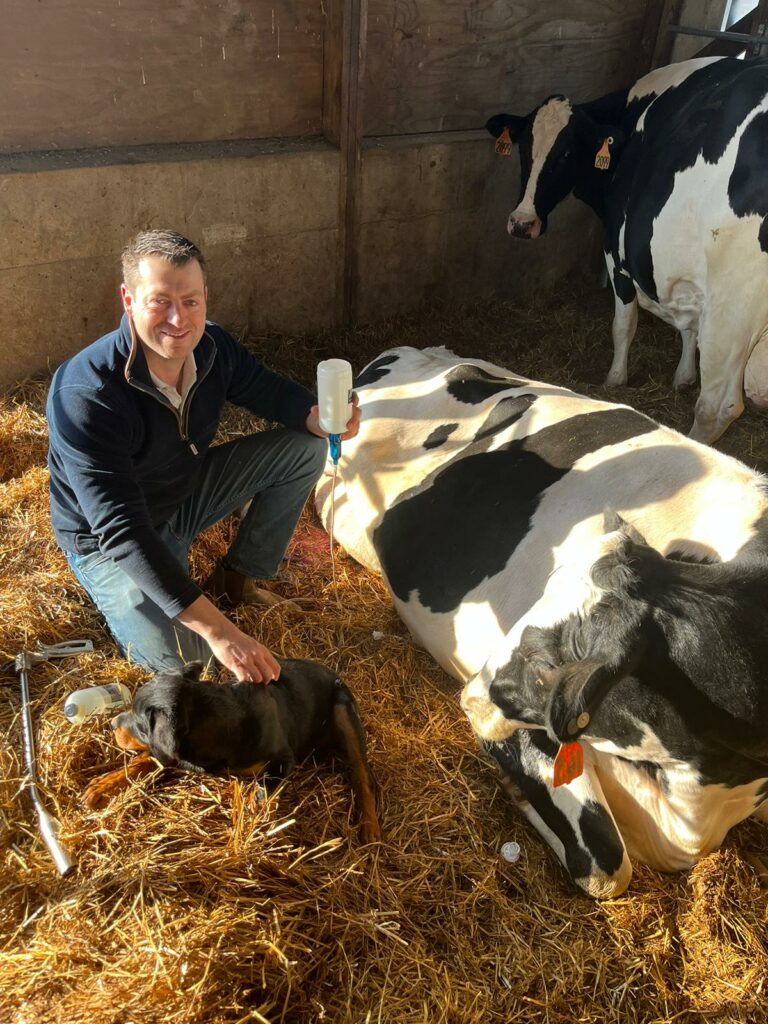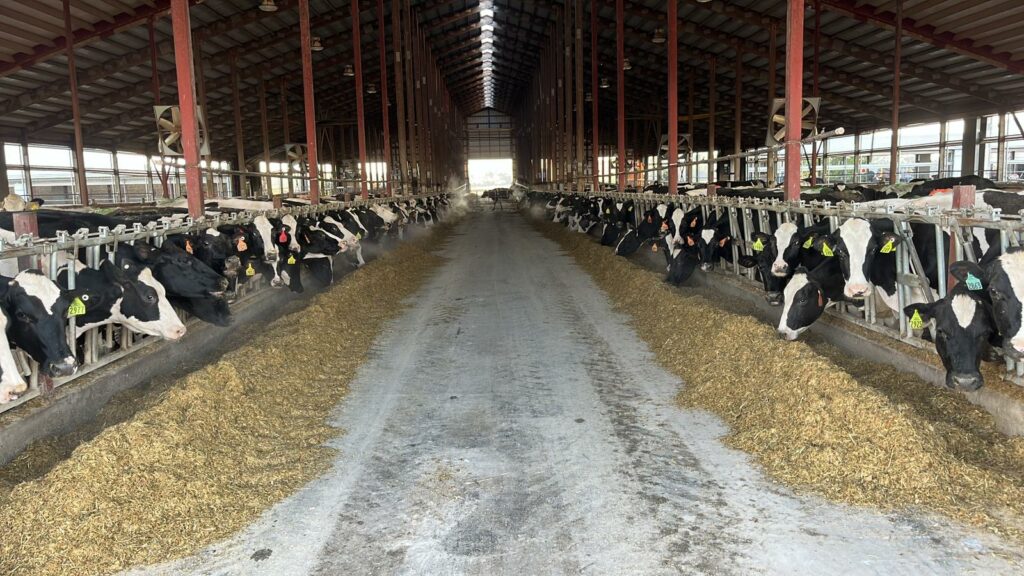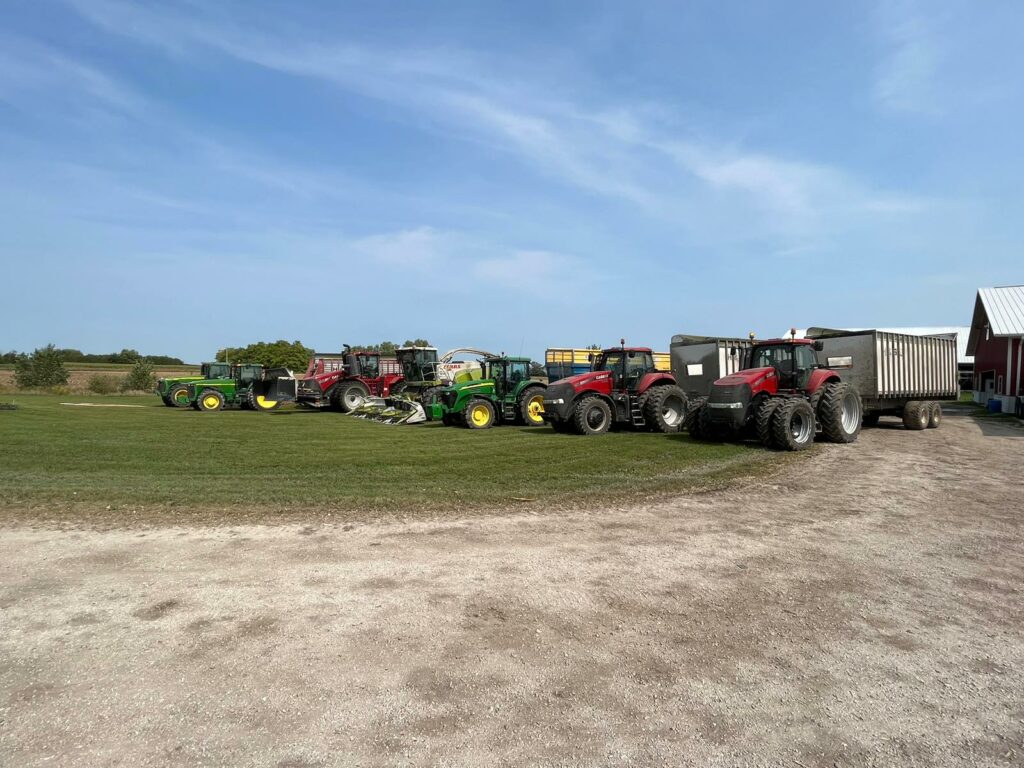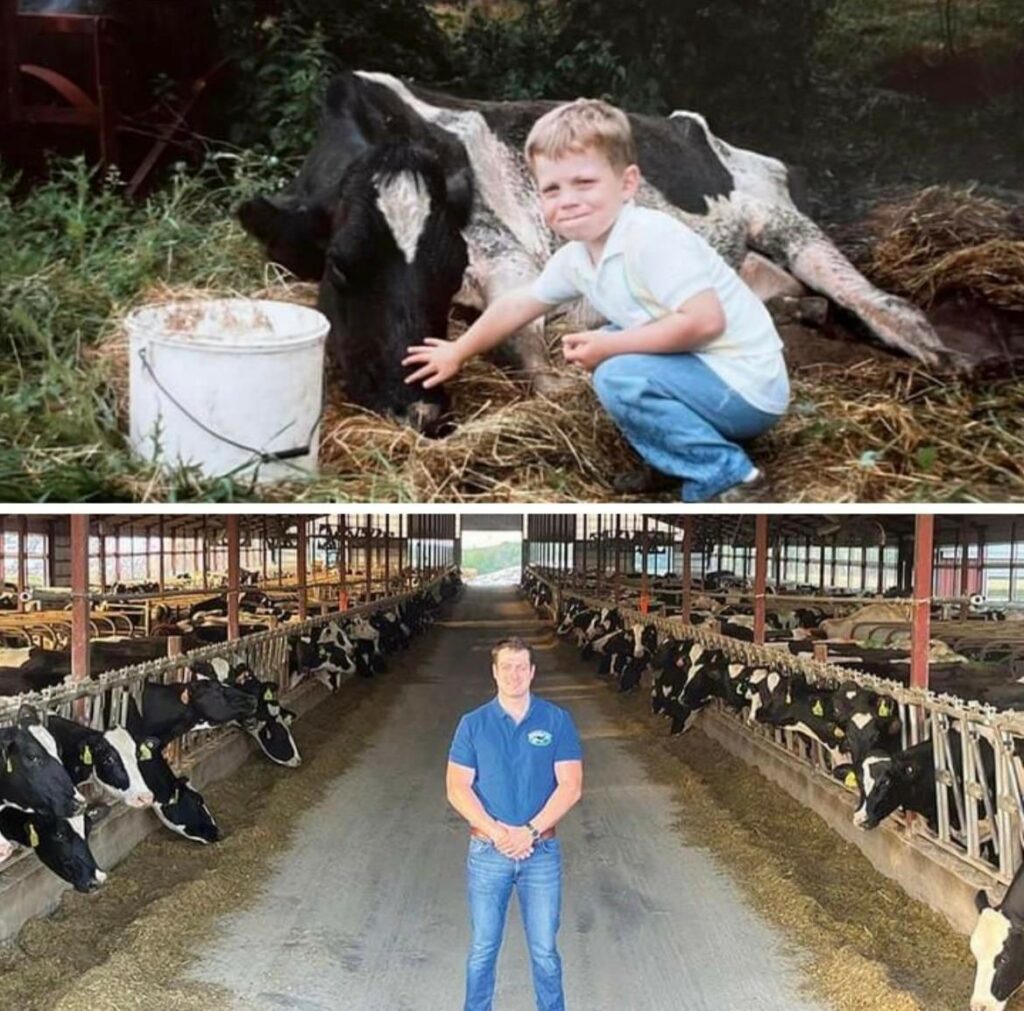About Porter Acres
Over the years of farming I have always struggled to buy good quality used machines with a stress free transaction.
After selling a handful of my own farm tractors I got the bug for providing someone else with a machine that fit the bill with a smooth transaction.
The main struggle I found was finding the time to view machines with dealers only open short hours. where we operate from a working farm there is always someone here to enable us to work around your schedule.
We are also able to send videos of the machine to show the working condition.
We like to give a real personal touch to all our transactions, we are also able to organise all transport logistics from door to door.
How moving to the US led to an 800-cow business
Crawford Porter was 15 when he first fell in love with dairy farming in the US on a study trip with his dad.
But it would take family tragedy and overcoming the challenges presented by Covid before he finally found the courage to move there permanently.
Crawford, who now milks 800 cows in Milwaukee, Wisconsin, originally hails from County Down in Northern Ireland, where he milked 80 cows on his family’s 40ha (100-acre) farm.
His mother, Elma, passed away when he was 17, and after completing a joinery certification he returned home to farm with his father, Jackie, at the age of 19.
At the time, they ran 80 Angus suckler cows because their former 120-cow dairy herd had been ravaged by TB.
After his father died just two years later, Crawford worked in Australia for two years before returning home and re-establishing a 100-cow dairy herd.
However, frustration with sky-high land values and a shortage of labour left him longing to return to the US.
“It was very hard to get land and labour at home. I was putting everything I had into the farm, but I was stagnant,” he recalls.
Making the move
Fate struck when he bumped into old friends in Northern Ireland that had moved to the US to farm, and it reignited his hunger to uproot.
“I got in touch with Dairy Realty, which specialises in selling dairy farms in the US and they put me in contact with George Bailey [originally] from Newtownards, who had relocated to the US with his wife, Joanne, 14 years ago.
“He took me under his wing and has been a fantastic mentor.”
Crawford decided to sell his cows and work for George in the US, but Covid hit and he was forced to return to Northern Ireland after just three months.
“During this time, a farm in Milwaukee came on the market and, on impulse, Crawford decided to buy it, for $10,000/acre (£8,000/acre) and sell his family farm.
“I had never seen the farm before I bought it, so it was a huge leap of faith, but George and other friends, Jim and Alison Thompson, viewed it, and I trusted their opinion.”



The home farm sold for £17,000/acre on the same day the offer was accepted on the new Milwaukee one on 17 November 2021, but difficulty in obtaining a visa meant it would take nine months before Crawford was able to return to the US and follow his dream.
“It was very hard trying to get a visa during Covid because everyone was working from home, and I couldn’t get through [on the phone]. I only did because I wouldn’t take no for an answer,” he says.
Crawford moved on 1 January 2022. He bought 300 cows and spent £243,000 upgrading the 24/24 rapid exit parlour and concreting.
He has borrowed money but says the bank has been supportive. He started milking three months later, on 1 April.
He says it is much easier to grow the business in the US than in Northern Ireland and, because he has a bigger herd, he can justify more labour. Six full-time members of staff are employed, which allows Crawford to spend more time off farm.
“The bigger you get, the easier it gets. I remember milking 80 cows in Northern Ireland and the weight of the world being on my shoulders and on my mind.
“I was doing everything all the time with absolutely no help, aside from the odd relief milker every second Sunday,” he admits.
Farm setup
In the US, land availability keeps it cheap and there is no TB to drive up the cost of cows, with animals averaging $2,000 (£1,600), he adds.
Heifers are reared at a satellite farm until six months of age for $3.60/day (£2.90/day) and are then trucked to a feedlot in Kansas, where they are served and brought back one month before calving, at 23 months.
Rearing costs at the feedlot total $2.80/day (£2.20/day).
A double Ov-Sync programme is used on the cows, with the herd’s pregnancy rate averaging 40%.
The farm comprises two sand-bedded cubicle sheds with headlocks, a calving barn and the parlour, which is currently being extended by adding a further four stalls each side to make a 32/32 rapid exit setup.
A flood-wash system is used to move slurry, where the sand is deposited in a separate lane to settle in a concrete area to dry and be recycled.
The biggest overhead, much like in the UK, is feed. However, electricity costs are cheaper than in the UK, at $3,000/month (£2,427/month) and two wells supply the farm’s water requirements.
About 81ha (200 acres) of maize and triticale is grown on owned land, with the rest bought in.
Last year, Crawford trialled double cropping: growing triticale after the maize harvest and with slurry applied twice using a dribble bar in the autumn and February.
It yielded 17t/ha as fed, with maize direct-drilled afterwards. This is fed mainly to far-off dry cows alongside maize in equal proportions.

Future
The move to the US has not been without its challenges, but Crawford says it has enabled him to focus on the bigger picture.
“It has been a massive learning curve – managing staff and the increased number of cows,” he says.
“What I like about farming over here is that if you make a small change, it makes a big difference to the business because of the scale.
“When I milked 80 cows in Northern Ireland, I didn’t have time to focus on the business or seize opportunities that were passing me by.”
Crawford has recently set up a machinery sales business, importing tractors from the UK, but he has big ambitions for the future.
“I want to milk 3,000 cows on this site and have multiple sites in later years; I have just purchased 300 cows and have enough stalls to accommodate this,” he says.
But for now, he is taking it one step at a time and hopes his parents would be pleased he has moved.
“I’m really grateful to the Baileys and Thompsons for helping me get to where I am today. My mother was a really nice lady and I think she would be happy that I am happy.
“Dad loved the US when we went on the trip so I think he would be pleased, too.”

